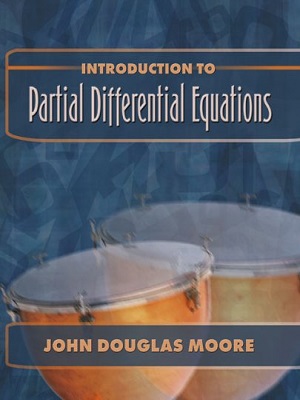Description
Partial differential equations are often used to construct models of the most basic theories underlying physics and engineering. For example, the system of partial differential equations known as Maxwell’s equations can be written on the back of a post card, yet from these equations one can derive the entire theory of electricity and magnetism, including light.
Our goal here is to develop the most basic ideas from the theory of partial differential equations, and apply them to the simplest models arising from physics.
In particular, we will present some of the elegant mathematics that can be used to describe the vibrating circular membrane. We will see that the frequencies of a circular drum are essentially the eigenvalues from an eigenvector-eigenvalue problem for Bessel’s equation, an ordinary differential equation which can be solved quite nicely using the technique of power series expansions. Thus we start our presentation with a review of power series, which the student should have seen in a previous calculus course.
It is not easy to master the theory of partial differential equations. Unlike the theory of ordinary differential equations, which relies on the “fundamental existence and uniqueness theorem,” there is no single theorem which is central to the subject. Instead, there are separate theories used for each of the major types of partial differential equations that commonly arise.
However, there are several basic skills which are essential for studying alltypes of partial differential equations. Before reading these notes, students should understand how to solve the simplest ordinary differential equations, such as the equation of exponential growth dy/dx = ky and the equation of simple harmonic motion d2y/dx2 + ωy = 0, and how these equations arise in modeling population growth and the motion of a weight attached to the ceiling by means of a spring. It is remarkable how frequently these basic equations arise in applications. Students should also understand how to solve first-order linear systems of differential equations with constant coefficients in an arbitrary number of unknowns using vectors and matrices with real or complex entries.
(This topic will be reviewed in the second chapter.) Familiarity is also needed with the basics of vector calculus, including the gradient, divergence and curl, and the integral theorems which relate them to each other. Finally, one needs ability to carry out lengthy calculations with confidence. Needless to say, all of these skills are necessary for a thorough understanding of the mathematical i language that is an essential foundation for the sciences and engineering.
Download Now





Reviews
There are no reviews yet.